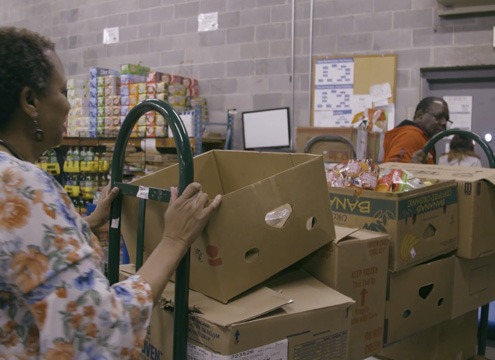We are improving the lives of all Marylanders by making sure everyone has access to nutritious food while providing solutions that address hunger in the first place.
We’re using new tools, new resources, and a wealth of data to make things better for Maryland’s children, individuals living in Communities of Color, older adults, and working families.
What does it take to feed our neighbors in need?
3 Branches
Baltimore (central Maryland), Salisbury (Eastern Shore), and Hagerstown (western Maryland)
760+ Community Partners
many of which offer multiple programs
180 Staff
a hardworking and dedicated team
Nearly 42,000 Volunteer Hours
a passionate and caring group
How do we get food to hungry Marylanders?
Distributing food from three locations across 21 counties and Baltimore city requires an inclusive approach with different solutions for different situations.
Community Partners
More than 760 food pantries, soup kitchens, shelters, and other community-based organizations all across the state help provide relief to members of their communities who struggle to put food on their tables.
Distribution Programs
School Pantries, Pantry on the Go, Summer Clubs, and Supper Clubs offer our neighbors in need access to nutritious food in a variety of settings. We also help connect people with federal and state food assistance programs, such as TEFAP and SNAP Outreach.
Maryland Food Bank Programs
Tailored programs ensure food-insecure Marylanders get the assistance they need.
The company I worked for closed last year, and while I have been able to find part-time work, it’s not enough to cover my rent, my bills, and be able to get food at the grocery store. I honestly don’t know how my daughter and I would get by if the Maryland Food Bank wasn’t out here today.”
Anne W.
under-employed mother
Where does the food bank get food?
Until recently, our inventory was roughly equal percentages of donated, donated facilitated, and purchased, with the remainder coming from the USDA.

Donated
Food comes from grocery and big box stores, manufacturers, distributors, wholesalers and our Farm to Food Bank Program.

Purchased
Food that MFB buys through relationships with manufacturers and distributors.

Facilitated Donated
Food that is recovered from local retailers by our Network Partners.

USDA
Federally sourced food from large-scale manufacturers.
During the pandemic, our model shifted, and we had to purchase a much higher percentage of the food we distribute. We found that the increased flexibility and control over the types of food we purchase results in a more dignified experience, allowing people visiting our partners to make healthier choices. We are continuing to use this model, even with the ongoing increased costs.
Culturally Inclusive Crops Bring Nutrition, Familiarity to Neighbors in Need
Our Culturally Inclusive Crop Program provides neighbors in need with familiar, culturally relevant foods, that not only ease the burden of acquiring fresh produce (which can be prohibitively costly, if it is available at all), but also encourages healthier eating choices.
How do we know how much food to send into communities?
Recognizing that hunger looks different in western Maryland than it does in Baltimore or on the Eastern Shore, we take a regional approach to our food distribution efforts, dividing Maryland into five areas — Western, Northern, Central, Southern, and Eastern.
With data gleaned from our Maryland Hunger Map, we work with our local partners in each region to help determine which of our existing programs or distribution methods will work best in their community. Additionally, we connect partners with nearby social service organizations that can help their neighbors in need address the root causes that are driving them to hunger in the first place.
And we’re continuing to innovate, and offer new approaches, such as Mobile Markets and versioned Back Up Boxes.
The Maryland Hunger Map
This resource is helping us do more for our neighbors, and we’re excited to have you explore the map to learn more about hunger.
How Can You Help?
Our ability to expand access to nutritious food while providing solutions for those in need relies on continued partnerships and support from Marylanders like you.
Help support our efforts.
Latest Food Distribution News

What a 2025! The Maryland Food Bank’s Top 10
Even with the challenges of increased prices (not only on food, but storage and transportation) plus the giovernment shutdown and uncertainty over benefits, you helped neighbors access more than 43 million meals in 2025!

Chesapeake Cares Warms the Season for Neighbors with Holiday Meal Kits
Chesapeake Cares does an amazing job of caring for their neighbors year-round. Find out how they make the season a little brighter for neighbors with some extra-spoecial holiday touches!

Walmart Grant Helps Partners Rescue More Local Food
Thanks to a grant from Walmart, six Maryland Food Bank community partners have new trucks so they can rescue more food locally and share with their neighbors in need.

Small Business, BIG Impact: Thurman & Fig are Changemakers
Find out how Thurman & Fig, a local floral decor company is making a difference in northwest Baltimore by supporting local non-profits, and acting as Changemakers!







